Lithium and Geothermal
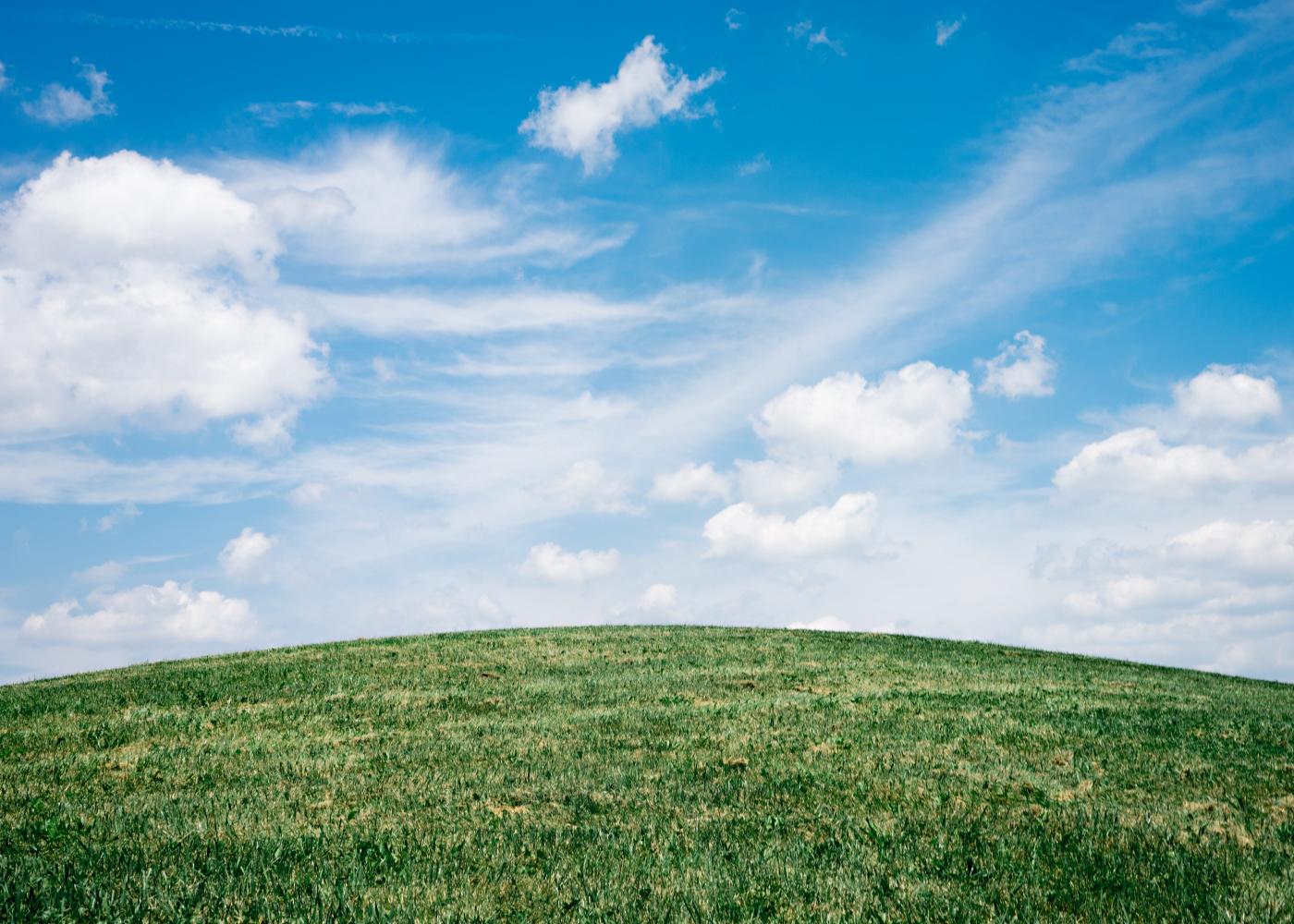
Global use of electric vehicles (EVs) is expected to rise significantly as countries try to reach their net zero CO2 goals. Market forecasting from BloombergNEF estimates that by 2030 over half of vehicle sales will not be solely using the internal combustion engine, and by 2040 that figure will have risen to over 80%.
That transition will help feed a tenfold increase in battery demand through 2030, equating to a global demand for 1.5 million metric tons of lithium carbonate equivalent.
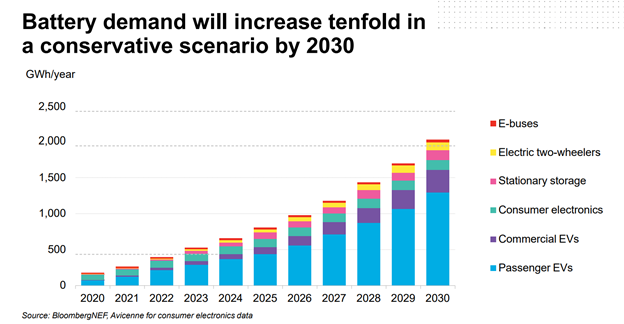
This upswing in the demand for batteries is expected to create a competition to control the lithium supply chain. As U.S. Secretary of Energy Jennifer Granholm has observed, "America is in a race against economic competitors like China to own the EV market—and the supply chains for critical materials like lithium and cobalt will determine whether we win or lose...If we want to achieve a 100% carbon-free economy by 2050, we have to create our own supply of these materials, including alternatives here at home in America. And we must scale up new American industries that will create millions of good-paying union jobs to do it.” (DoE press release)
The Imperial Valley has such vast lithium potential that California Governor Gavin Newsom referred to the area as "the Saudi Arabia of lithium" as he recently announced the state's new budget proposal, dubbed the "California Blueprint".
To take advantage of this opportunity to develop lithium from the Imperial Valley area, the Blue-Ribbon Commission on Lithium Extraction was established last year through California state legislation and directed to review, investigate, and analyze opportunities and benefits for lithium recovery and use in the state.
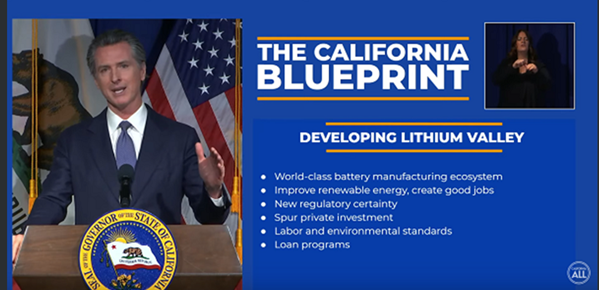
In the Imperial Valley, minerals like lithium are transported in the geothermal brine extracted from the hot rocks at depth. By co-producing the mineral and heat recovery together it strengthens economic arguments for both, provides a more environmentally friendly method of obtaining the critical minerals than conventional mining techniques, and uses clean renewable energy for the processing.
Three geothermal energy operators in Imperial Valley are already at the pilot plant development and demonstration phase with each forecasting 10s to 100s of thousands of metric tons production per year depending on demand -- enough to meet a significant proportion of that global need. One such project is Controlled Thermal Resources' Hell's Kitchen project, an artist's impression of which can be seen below.
Of course, there is an opportunity here for not just the recovery of lithium from these geothermal brines, but to build on top of that an entire battery and electric vehicle ecosystem in an area of central Southern California that has suffered from economic hardship.

"Electric Vehicle Outlook 2021" by BloombergNEF (link: https://about.bnef.com/electric-vehicle-outlook/ )
"California Banks on Lithium Extraction and Geothermal Holds the Key" by Lisa Howard-Fusco (link: https://geothermal.org/our-impact/blog/california-banks-lithium-extraction-and-geothermal-holds-key)
"Drilling for 'White Gold' is Happening Right Now at the Salton Sea" by Sammy Roth, Los Angeles Times (link: https://www.latimes.com/business/story/2021-11-15/drilling-for-white-gold-is-happening-right-now-at-the-salton-sea )
"Salton Sea is Key to CA's EV Future, Contains 1/3 of Global Lithium Supply" by Susan Carpenter (link: https://spectrumnews1.com/ca/la-west/environment/2021/05/27/salton-sea-is-key-to-ca-s-ev-future--contains-1-3-of-global-lithium-supply )
"CTR Commences Drill Program at Hell's Kitchen Lithium and Power" from Controlled Thermal Resources website (link: https://www.cthermal.com/latest-news/ctr-commences-drill-program-at-hells-kitchen-lithium-and-power )
"Competitiveness of Direct Mineral Extraction from Geothermal Brines" by Anna Wall (link: https://publications.mygeoenergynow.org/grc/1034175.pdf)
How New Technologies Lead to Geothermal Energy Capture
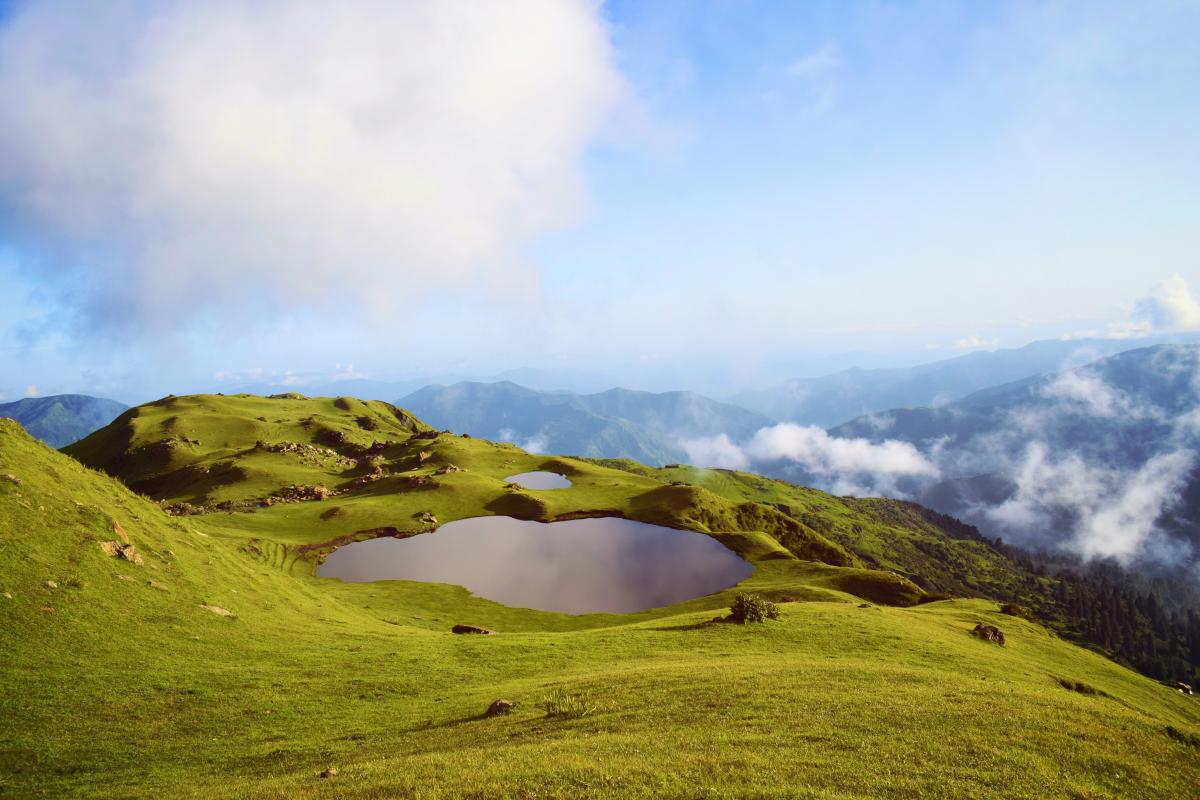
Webinar will be held on Thursday, February 10, 2022 at 2pm Pacific time.
Applied Geothermal Data Analysis, Simulation, and Technologies Workshop
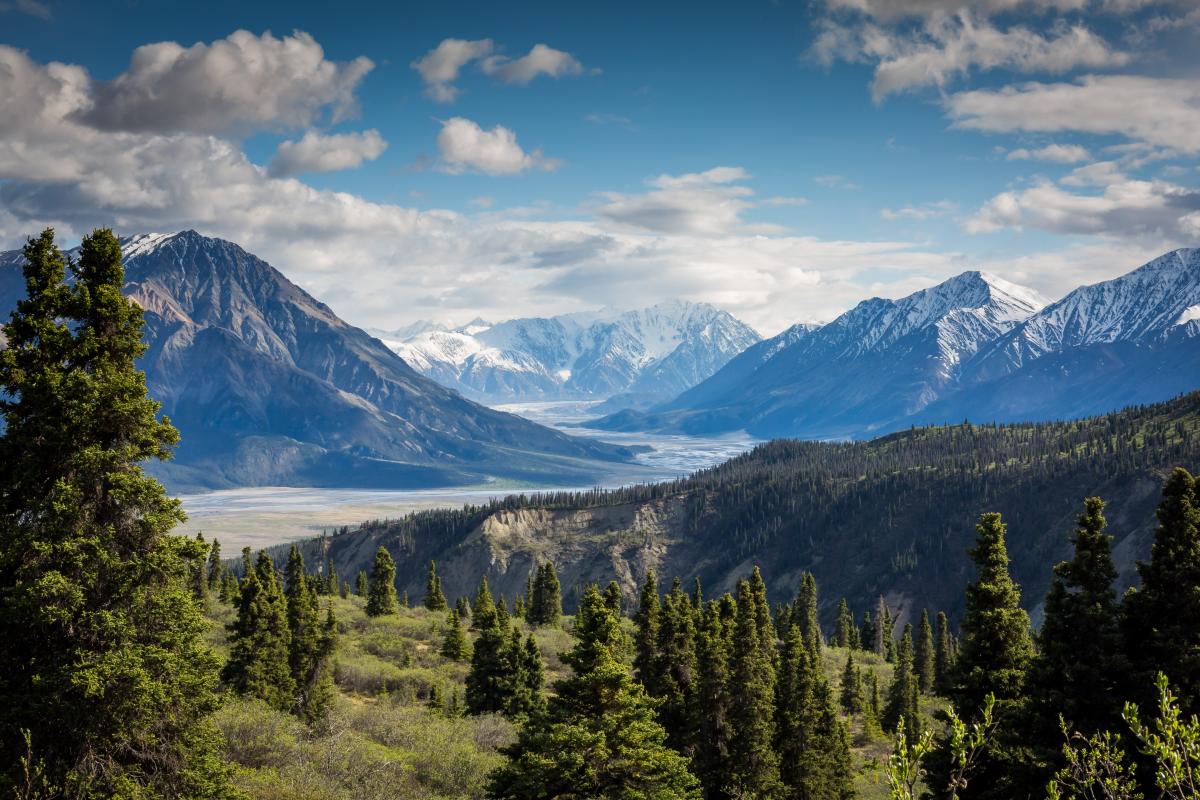
The 2022 Geothermal Rising Student Committee fundraising workshop will bring industry professionals from across the globe to your own computer monitor. Join the GR Student Committee as they invite guest instructors from TU Delft, Zanskar Geothermal, and TNO. Participants in the workshop will learn Python basics, geospatial analysis, dynamic geothermal simulation, economic analyses, drilling basics, emerging geothermal well technologies, and more. Much of the content will be interactive with material take-aways and practical exercises. Each session will be followed by networking opportunities where participants can mingle. All registrants will receive access to recordings and material following the event, wherever possible. Please join for this exclusive fundraising event!
The workshop will take place March 14-16, 2022. For more information or to register, please follow the link below.
Geothermal in Hybrid Renewable Systems
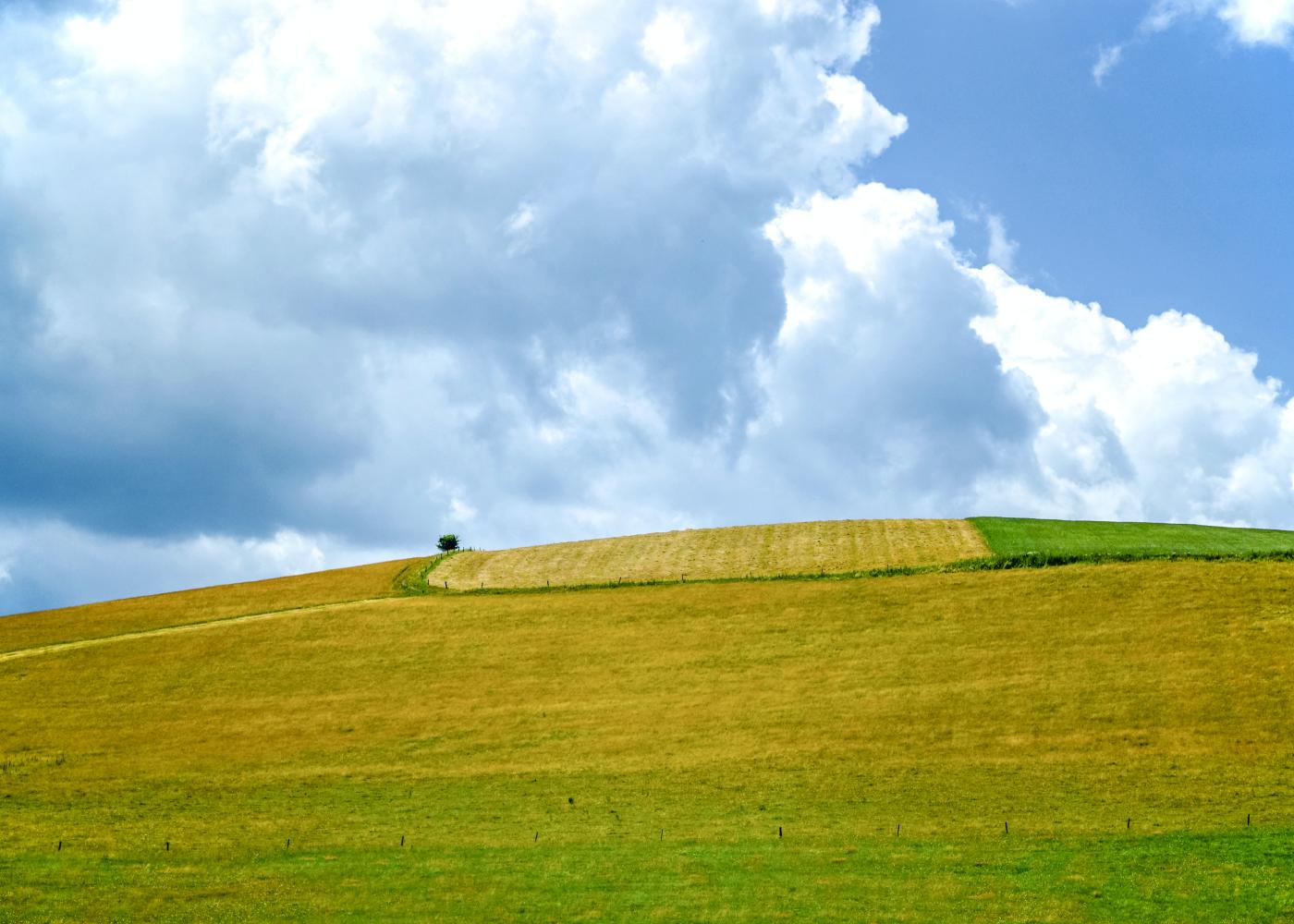
The term ‘hybrid’ can mean a lot of different things in the energy industry. For the purpose of this piece, however, we are specifically looking at systems that combine geothermal energy with another renewable technology. Three primary possibilities are:
- Geothermal and Solar
- Geothermal and Wind
- Green Hydrogen Production
Geothermal co-production with solar PV is a natural pairing and several geothermal operators have switched over to this model. Examples include Cyrq Energy's Patua project, Ormat's Tungsten Mountain project, and ENEL's Stillwater project.
Geothermal plants are more efficient during cooler atmospheric temperatures, whereas solar PV is most efficient during hot, sunny, weather. Combining the two helps mitigate the potential output decline caused by changing weather patterns . This is especially valuable in areas where water cooling is not an option, helping maintain power generation when pricing is at its peak.
Similarly, Concentrated Solar Power (CSP) allows boosting of a hybrid plant by increasing the conversion efficiency of the of the geothermal steam turbines.
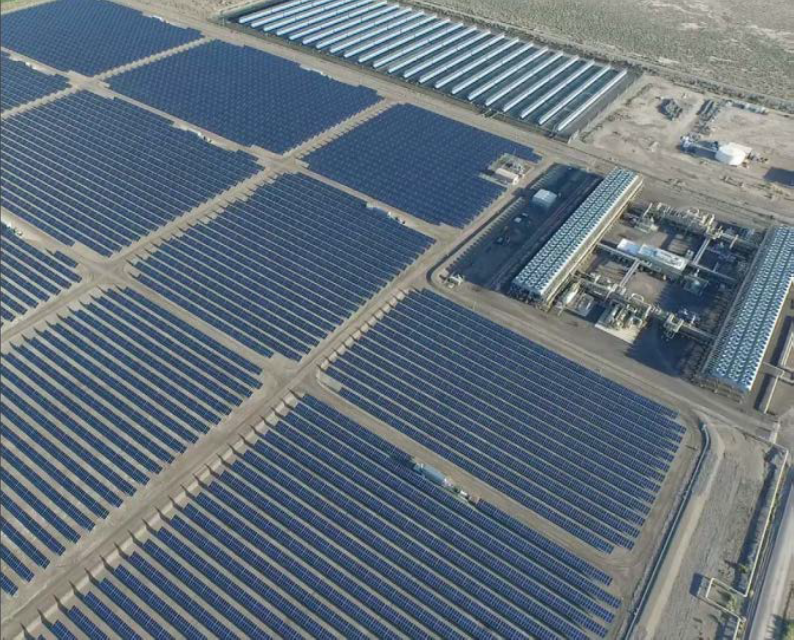
As noted by Ann Robertson-Tait and Douglas Hollett in their paper last year, there are currently no geothermal plants combined with wind power, but this hybridization would be valuable to explore.
Many deep sedimentary basins in the wind belt of central US that are used for oil & gas production also contain fluids that are attractive for geothermal production. By partnering the intermittent wind generation with baseload geothermal may improve overall performance of both energy sources.
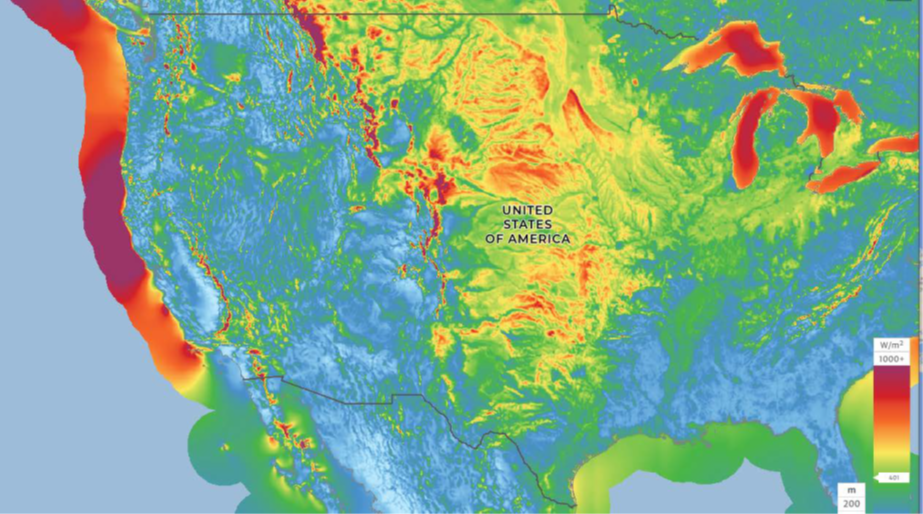
Geothermal power production offers a great benefit to the efficiency of green hydrogen electrolysis by supplying a clean firm 24/7 power source. Geothermal also has significantly smaller land footprint than other renewable sources, and could potentially allow for stacking of government subsidies.
Hydrogen production could be kicked in when external power demand from the geothermal plant is lower than generation potential, or where geothermal resources lack access to markets because of remoteness, lack of transmission, or both, such as mountainous areas or islands.
The Halcyon Green Hydrogen plant was commissioned in late 2021 in New Zealand, supplied by geothermal energy. It is expected to start supplying green hydrogen into wholesale markets early this year.
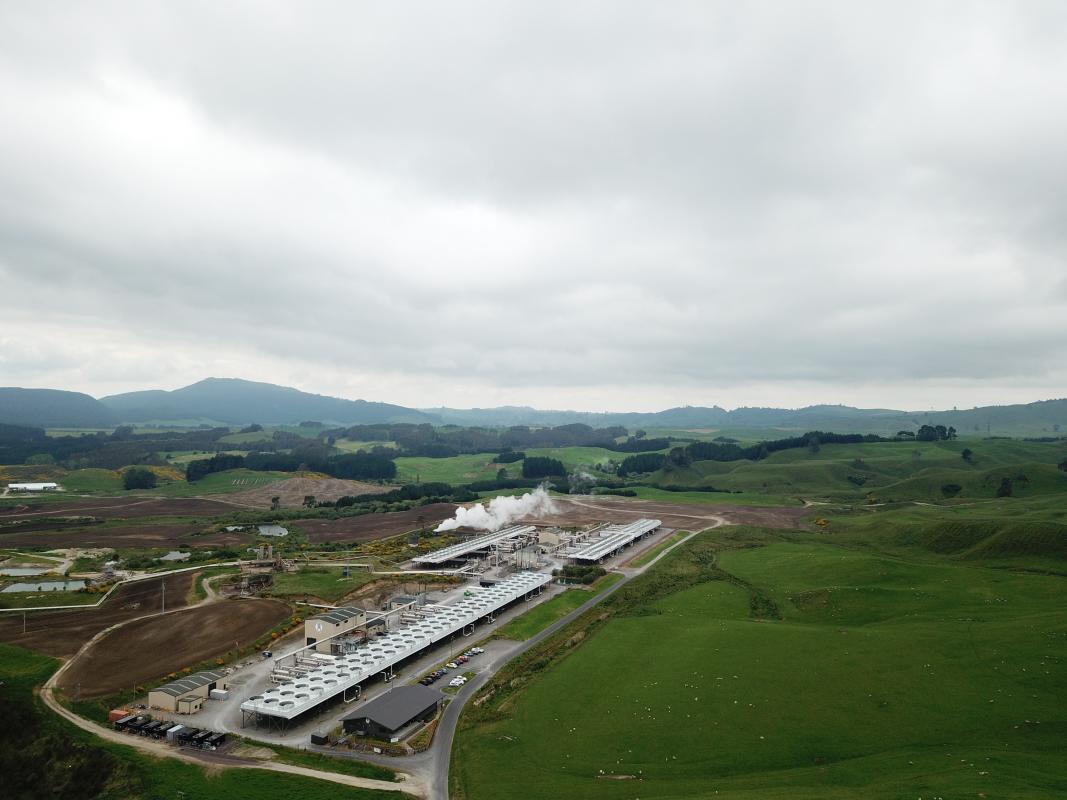
If you are interested in reading more about the potential of geothermal hybrids, here are several good places to start:
- “Better Together: New Synergies and Opportunities From Hybrid Geothermal Projects” by Ann Robertson-Tait and Douglas Hollett (link: https://www.geothermal-library.org/index.php?mode=pubs&action=view&record=1034445)
- “Hybridizing Solar Heat with a Geothermal Binary Power Plant Using a Solar Steam Topping Turbine” by Joshua McTigue et al. (link: https://www.geothermal-library.org/index.php?mode=pubs&action=view&record=1034054)
- “Developments in Renewable Hydrogen Electrolysis by Supercritical Geothermal Cogeneration” by Jim Shnell and Michael C. Tucker (link: https://www.geothermal-library.org/index.php?mode=pubs&action=view&record=1034288)
- “Green Hydrogen: Geothermal’s Route to Pseudo-Commoditization” by Taylor Mattie (link: https://www.geothermal.org/index.php/our-impact/blog/green-hydrogen-geothermal-synergistic-pairing)
- “The Halcyon Power Green Hydrogen Plant is Powered by Geothermal Energy from the nearby Mokai Geothermal Power Plant” by Carlo Cariaga, ThinkGeoEnergy (link: https://www.thinkgeoenergy.com/first-green-hydrogen-plant-in-new-zealand-starts-operations/)
Geothermal Rising Elects the Most-Diverse Board in its 50-Year History
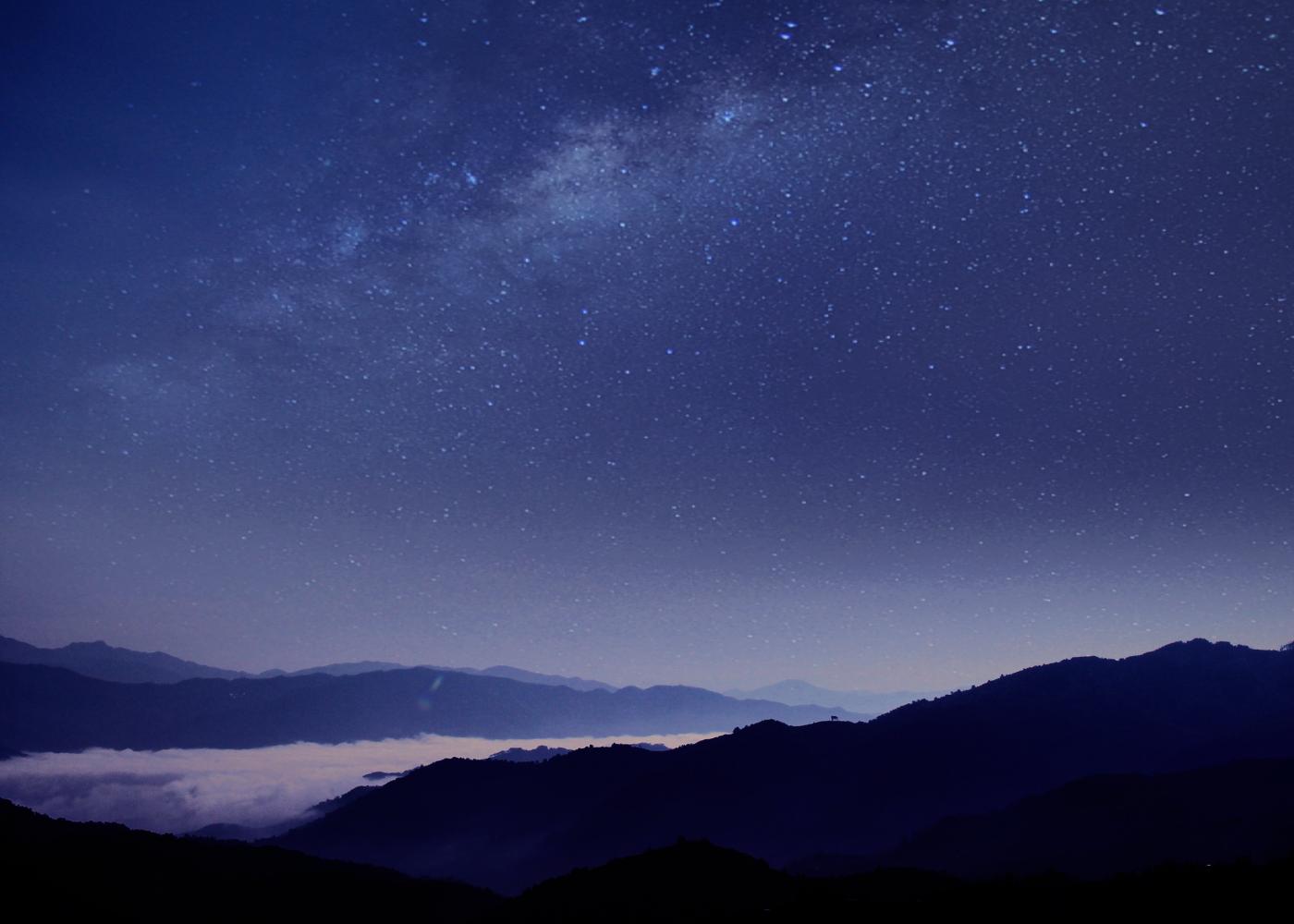
Geothermal Rising, the global nonprofit association that champions geothermal energy and those who make its use possible, announces the election results for its new Board of Directors. Among the Board are seven new Directors that represent the most diversity of any Board in the organization’s 50-year history in terms of gender, racial, and industry diversity.
The new Directors include:
- Elisabeth de Jong, California Energy Commission, Government Representative
- Jay Egg, Egg Geo, LLC., At-Large Representative
- Rita Esuru Okoroafor, Stanford University, At-Large Representative
- Nick Goodman, Cyrq Energy, Inc., Owner/Operator Representative
- Kennie Tsui, New Zealand Geothermal Association, International Representative
- Jaclyn Urbank, POWER Engineers, Inc., Industry Consultant Representative
- Jeanine Vany, Eavor Technologies Inc., Energy Advocate Representative
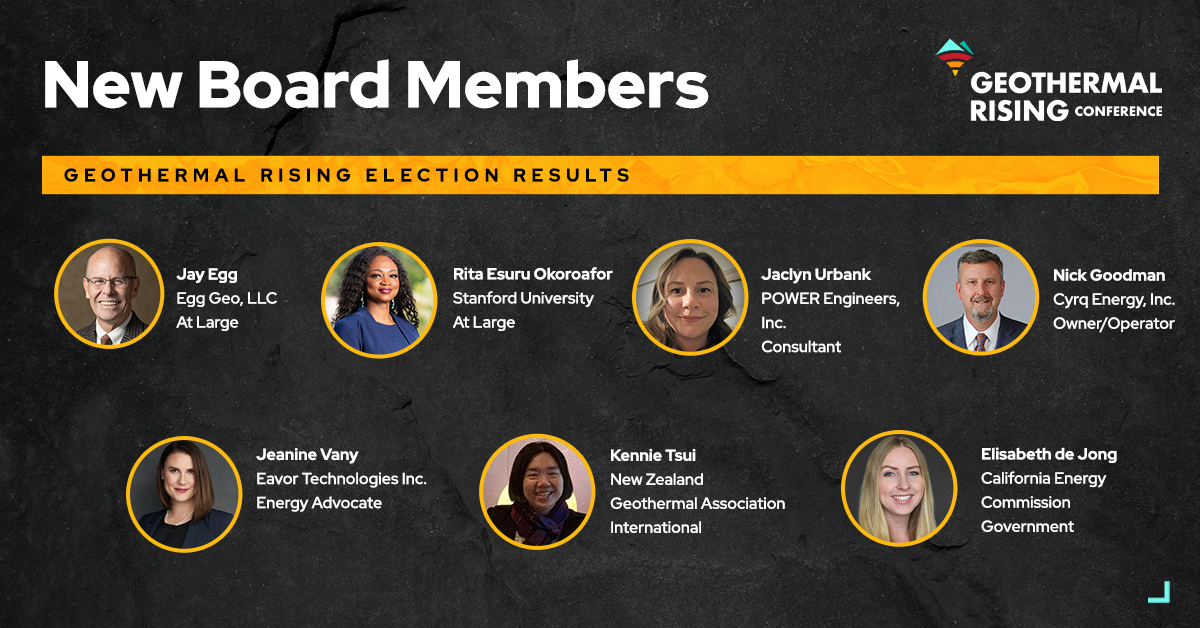
The election for the Board closed at the end of November 2021, and the new Directors were elected from a pool of talented and extraordinary candidates with broad representation across the geothermal industry and community. They join six continuing Directors to form the 2022 Geothermal Rising Board, which will see a female majority for the first time in its history with eight women presiding. The new Board also reflects a shift to greater industry diversity as the association becomes more focused on both heat and power utilization of Earth's energy, as well as executing on a strategic direction to represent all aspects of the community.
